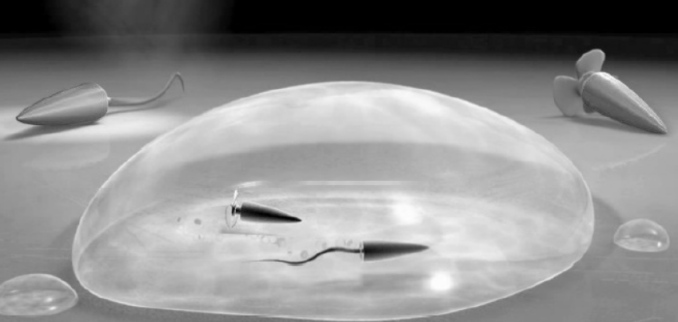Accept
Details & settings
This website uses cookies for cookie consent and statistics.
Sebastian Benden, Veronika Unger
Nanotechnology has made dramatic progress in recent years, promising numerous novel products including nanomachines. The problem with this vision is that its realization is very complicated and thus nanomachines may be a thing of the more distant future. Initial attempts were based on mechanical engineering, however, this kind of electromechanical nanomachines turned out to be a dead end. Macroscale solutions cannot simply be shrunk to the nanoscale, where gravity becomes less important and electrical forces become much more important. This makes nanoscale objects very sticky and therefore nanomachines require a propulsion mechanism different from e.g. a submarine (see Fig. 1). Also, nanomachines cannot be controlled with radio waves as the required antenna would be too large.

Fig. 1: Nanomachnines in a droplet of water
(Source: MIKROWELTEN - Eine Reise in die Mikrosystemtechnik)
We believe that the first nanomachines will be built and controlled by biologists, rather than mechanical engineers. We see this as a future area of biomimetics, where solutions are inspired by nature. For example, unicellular organisms like paramecium caudatum can serve as model systems as they have the simplest biological propulsion mechanisms and control systems.
We are not aiming to build nanomachines, but the goal of our project is to learn from paramecium caudatum how nanomachines could be controlled in liquids.